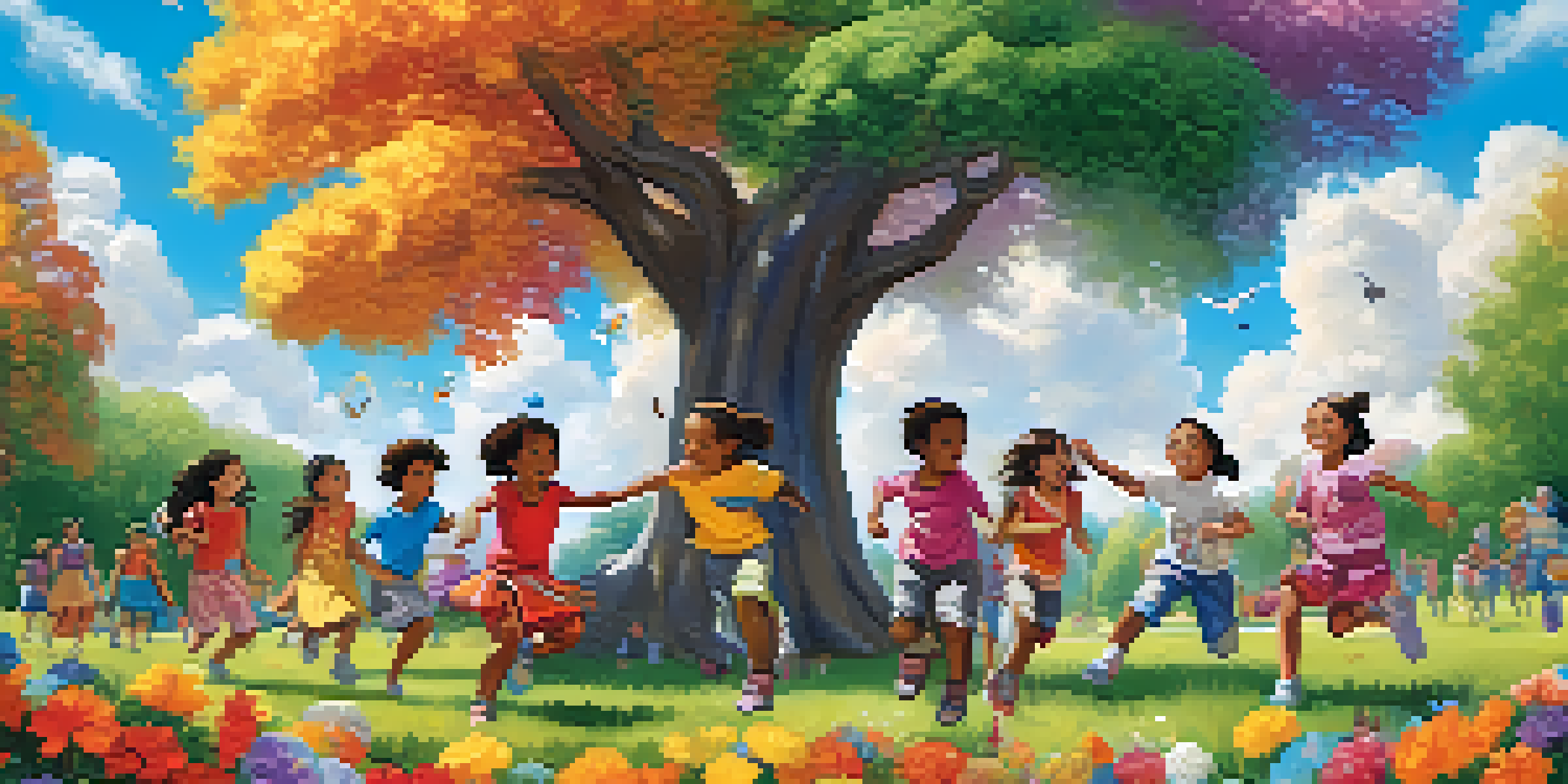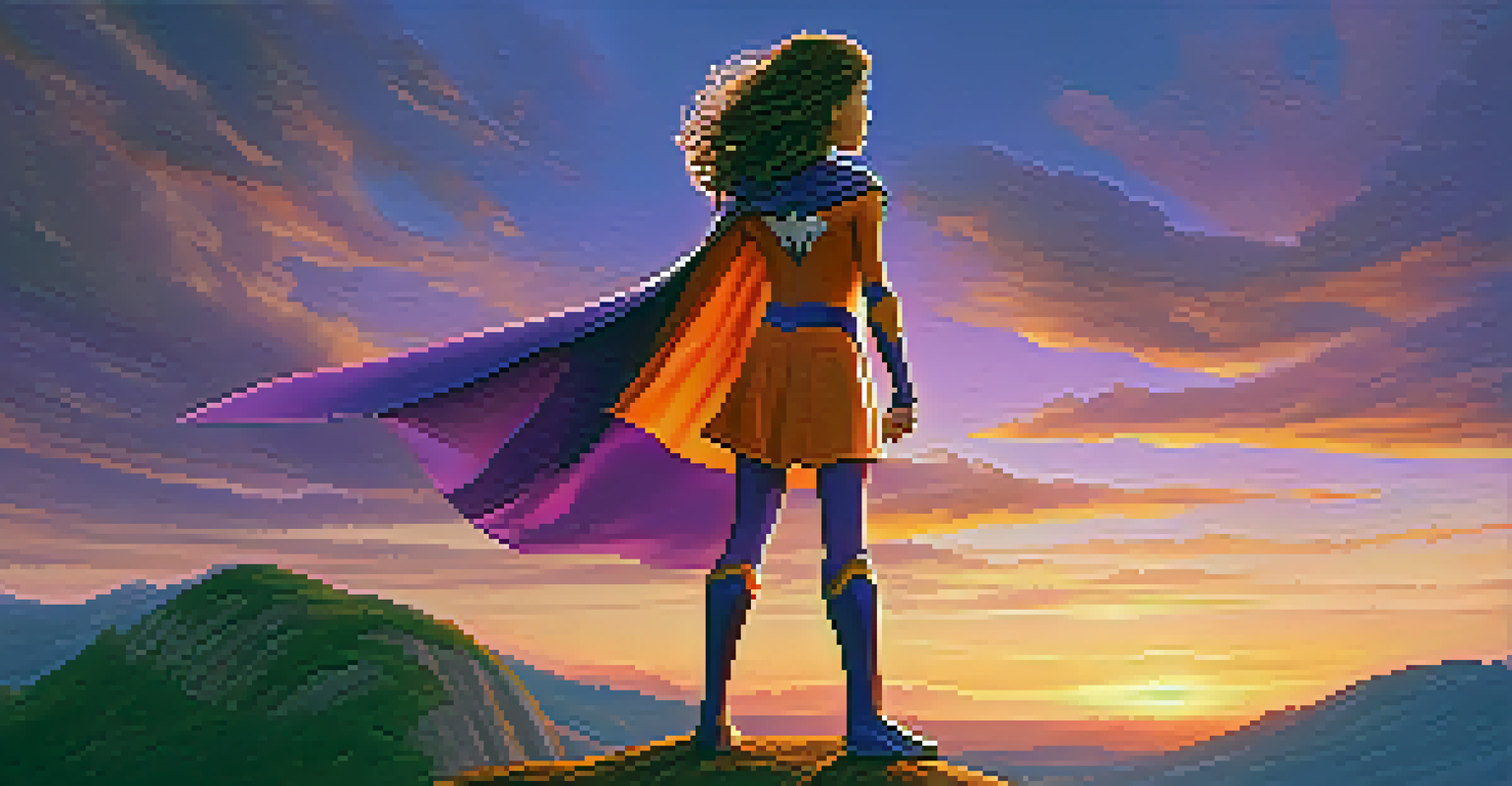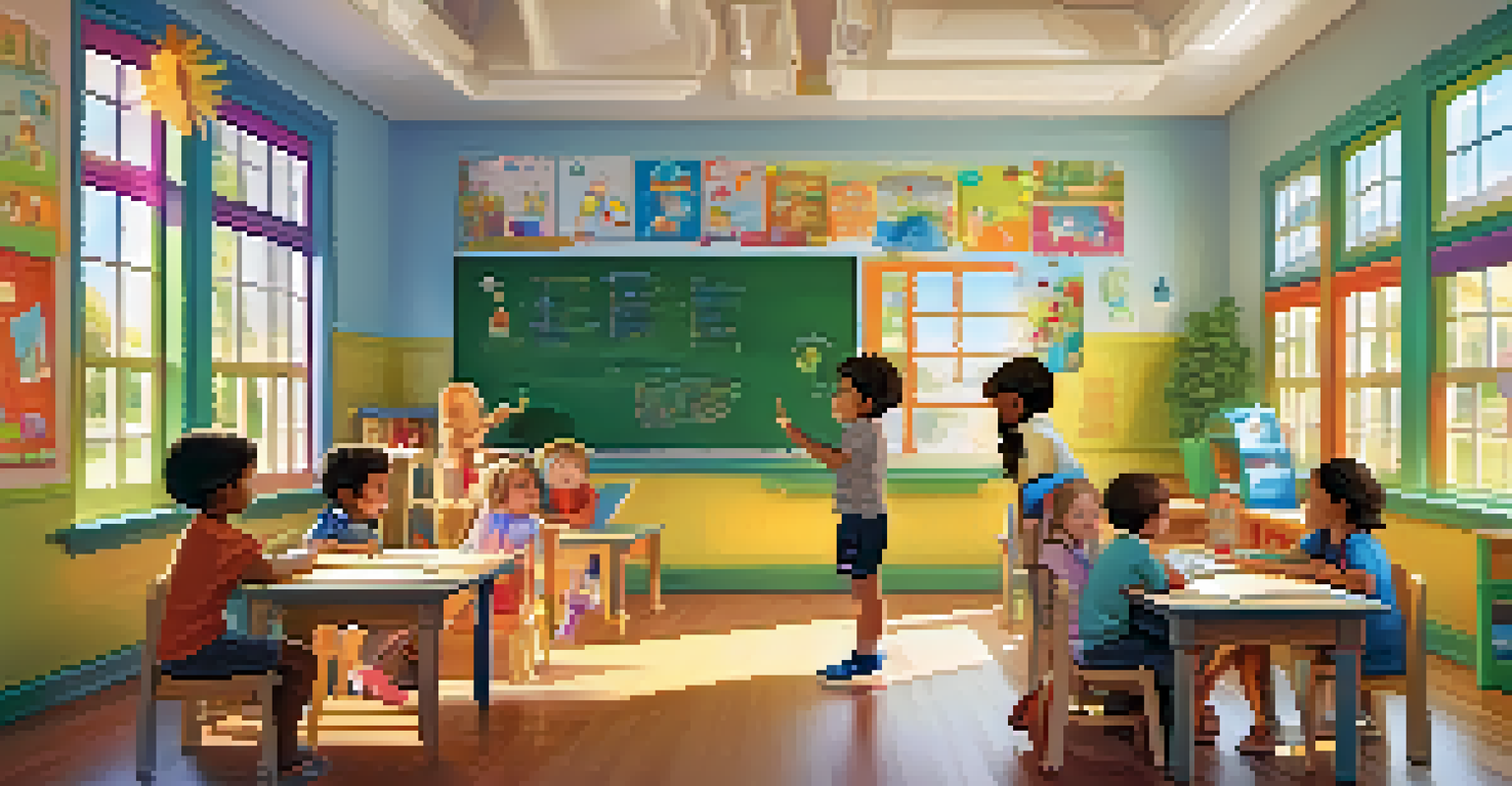The Influence of Animation on Children's Cultural Norms

Understanding Animation's Role in Kids' Lives
Animation plays a central role in children's entertainment and learning. With vibrant visuals and engaging stories, it captures kids' attention like few other mediums. From classics like 'Mickey Mouse' to modern hits like 'Frozen', animation shapes how children understand the world around them.
Animation can explain complex ideas in a way that is visually engaging and accessible to children.
As children watch animated shows, they often absorb the cultural norms and values depicted within those stories. This absorption can influence their behavior, attitudes, and expectations about social interactions. The lessons learned through animation can have a lasting impact on their development.
For instance, animated characters often embody traits like kindness, bravery, or teamwork. When kids see these qualities celebrated in their favorite shows, they're more likely to emulate them in real life. Thus, animation serves as a powerful tool for social learning.
Cultural Representation in Animated Content
Cultural representation in animation is crucial for children’s understanding of diversity. Classic animations have often lacked this representation, but recent efforts show a shift towards inclusivity. Shows like 'Coco' and 'Moana' highlight cultural stories that resonate with various ethnic backgrounds.

When children see characters that reflect their own culture or introduce them to new ones, it fosters empathy and appreciation for diversity. This exposure can help break down stereotypes and promote a more inclusive worldview among young audiences. It's a vital step in creating a sense of belonging for all kids.
Animation Shapes Social Learning
Animation serves as a powerful tool for children to absorb cultural norms and values, influencing their behavior and social interactions.
Moreover, animation allows for the exploration of complex cultural narratives in a digestible format. By weaving traditional stories into modern storytelling, kids can learn about their heritage while engaging with contemporary themes. This blend enriches their cultural understanding.
Moral Lessons and Ethics in Animation
Many animated shows are rich with moral lessons that resonate with children. From classic tales like 'The Tortoise and the Hare' to newer narratives in 'Zootopia', these stories often teach values such as honesty, hard work, and friendship. Kids learn not just from the outcomes of characters’ actions but from their emotional journeys.
The beauty of animation is that it can create a world where anything is possible, allowing children to explore diverse cultures and ideas.
The ethical dilemmas faced by animated characters can spark meaningful conversations between parents and children. For example, discussing the choices made by characters can lead to discussions about right and wrong in real life. This dialogue is essential for developing critical thinking skills in young minds.
Furthermore, the emotional arcs in animation often emphasize the importance of understanding others' feelings. This emotional intelligence is a crucial aspect of social development, helping kids navigate their relationships more effectively. Through these lessons, animation doesn't just entertain; it educates.
The Impact of Animation on Gender Roles
Animation has a significant impact on shaping children's perceptions of gender roles. Traditional animations often portrayed rigid stereotypes, but recent trends are challenging these norms. Strong female leads like Elsa and Mulan redefine what it means to be a hero, inspiring young girls and boys alike.
By showcasing diverse gender representations, animation can help dismantle outdated views about masculinity and femininity. Kids exposed to these progressive characters are more likely to embrace a broader understanding of gender roles in their own lives. This change is vital for fostering equality.
Diversity in Animation Matters
Culturally diverse animated content fosters empathy and appreciation for different backgrounds, promoting a more inclusive worldview among children.
Moreover, animated series that depict characters breaking gender norms encourage children to express themselves freely. When boys see characters who embrace vulnerability or girls who display courage, it promotes a healthier understanding of identity. Animation can thus be a catalyst for social change.
Animation's Influence on Language and Communication
Animated shows can significantly enhance children's language skills and communication abilities. The engaging and repetitive nature of animation helps young viewers grasp new vocabulary and phrases. Shows like 'Peppa Pig' often use simple, clear language that is easy for toddlers to understand and mimic.
As children watch animated characters interact, they learn about tone, expression, and context in communication. This exposure helps them develop their conversational skills and understand social cues. Such skills are essential for their overall social development and future relationships.
Additionally, animation often incorporates humor and storytelling techniques that appeal to kids. This makes learning language fun and entertaining, encouraging a love for words and storytelling. By fostering this interest, animation plays a crucial role in language acquisition.
The Role of Animation in Shaping Social Behaviors
Animations often depict social scenarios that teach children about friendship, cooperation, and conflict resolution. For instance, shows like 'Paw Patrol' emphasize teamwork and helping others, which can encourage similar behaviors in real life. These lessons are not just entertaining but also immensely valuable.
When kids see characters navigating social challenges, they gain insights into how to handle similar situations themselves. Whether it's sharing toys or resolving disagreements, the lessons learned from animation can guide their interactions with peers. This influence can contribute to their social competence.
Animation Teaches Moral Lessons
Many animated stories impart essential moral lessons and ethical dilemmas, encouraging critical thinking and emotional intelligence in young viewers.
Moreover, positive portrayals of friendship and community can help children build stronger connections with their peers. As they identify with their favorite characters, they often strive to embody the kindness and support they see on screen. Animation thus plays a pivotal role in shaping social norms.
The Future of Animation and Its Cultural Impact
As technology advances, the future of animation holds even more potential for influencing children's cultural norms. With virtual reality and interactive storytelling on the rise, kids will engage with animated content in ways previously unimaginable. This evolution could deepen their connection to the narratives they experience.
Moreover, the push for diverse stories and inclusive representation is likely to continue, reflecting the changing societal landscape. As animators prioritize authenticity, the stories told will resonate more deeply with children from various backgrounds. This shift will enrich their cultural understanding and acceptance.

Ultimately, the future of animation is bright, with the ability to shape not just individual values but also broader societal norms. By promoting empathy, diversity, and ethical behavior, animation can help cultivate a generation that values inclusivity and understanding. The potential for positive impact is immense.